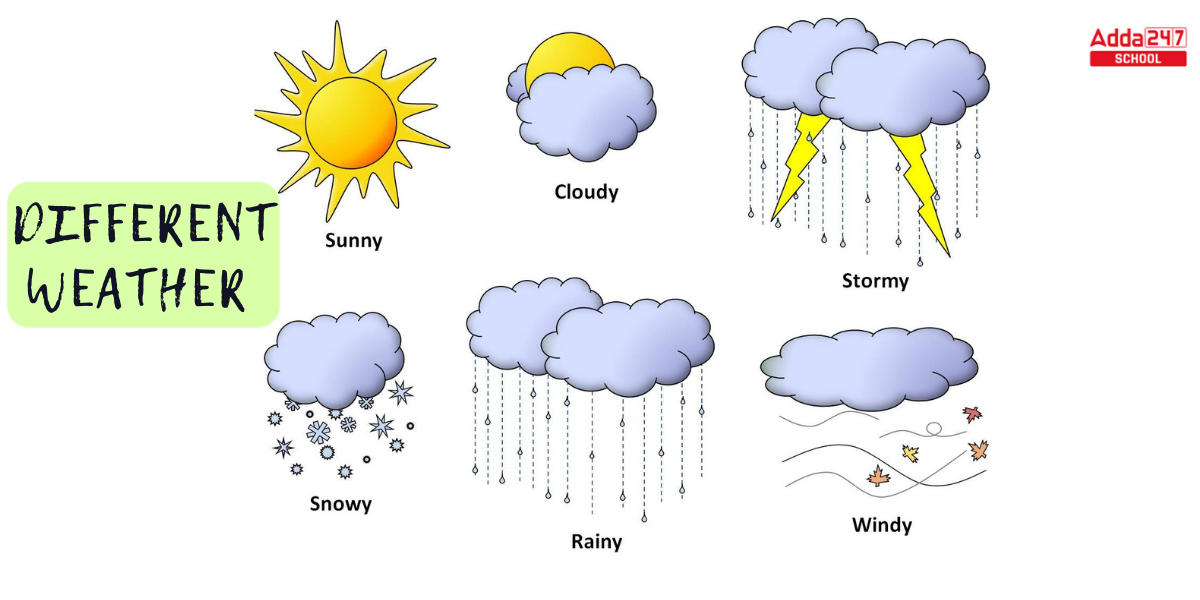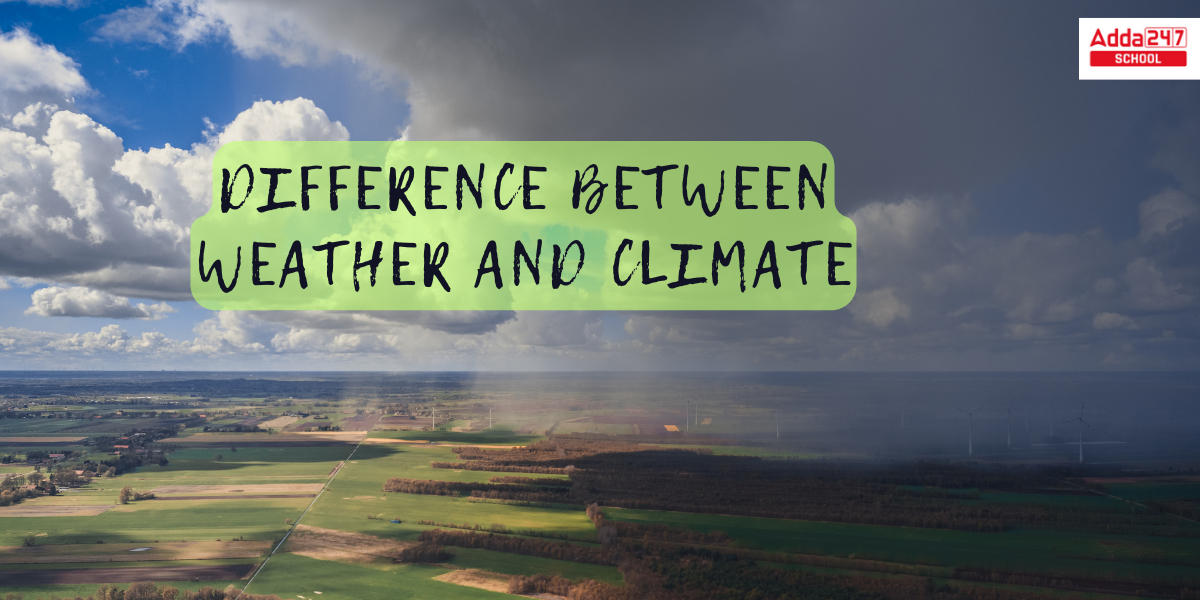Table of Contents
Difference Between Weather and Climate: If we want to grasp the difference between weather and climate in simpler terms, it is a matter of time. The weather reflects short-term atmospheric conditions in a small area, whereas climate is the average daily weather over a longer period at a certain bigger location. Weather is also related to how the environment operates and, in particular, how it affects human habits. Humidity, temperature, precipitation, brightness, the amount of cloudiness visibility, wind, and air pressure are all daily weather elements. Weather refers to the circumstances of the atmosphere for a short period, but climate refers to how the atmosphere “functions” over a longer period. Go through the full article to know the difference between weather and climate in more detail.
Difference Between Weather and Climate Class 9
Weather differs from climate in that weather comprises temporary that can be only minutes to a few weeks alterations to the atmosphere.

What does weather mean?
Most people associate weather with temperature, humidity, rainfall, cloudiness, luminescence, the breeze, and atmospheric pressure (high and low pressure). Weather can fluctuate from minute to minute, hour to hour, day to day, and season to season in most regions. But climate is a standard deviation of weather throughout time and space. Weather is essentially the behavior of the atmosphere, particularly in terms of its effects on life and human endeavors.
Example – A simple way to remember the difference between weather and climate is that climate represents what we expect, such as a very hot summer, whereas weather is what we receive suddenly in the summer, a hot day with pop-up showers.
Difference Between Weather and Climate Change with Examples
As previously stated, the climate is a description of the overtime trend of weather in a specific place.
What does climate mean?
Some scientists define climate as the average weather for a specific place and time period, typically over a 30-year period. It’s essentially a typical weather pattern for a certain region. Scientists assessed the climate of a specific location based on averages of precipitation, relative humidity, temperature, sunshine, wind velocity, occurrences such as fog, frost, thunderstorms, and other meteorological measures that take place over a long period of time in a specific region.
Example – Northern India, for example, experiences subzero temperatures from mid-November through February. December and January are the coldest months in northern India. Throughout the winter, the temperature normally lowers from south to north. There are warm days and cool nights. Frost is common in the north, and snowfall occurs on the Himalayas’ higher slopes.

What is climate change?
- Climate change is a steady change in a location’s temperature and typical weather patterns. Climate change can refer to a specific place or the entire world. Weather is sometimes confused with climate.
- However, climate differs from weather in that it is measured over time, whereas weather may vary from day to day or year to year.
- Weather patterns may become less predictable as a result of climate change. Because the projected temperature and rainfall rates can no longer be relied on, these unexpected weather patterns might make it difficult to sustain and develop crops in farming regions.
- Climate change has also been linked to other damaging weather phenomena such as more frequent and extreme floods, rainstorms, cyclones, temperature rising and earthquakes.
Difference Between Weather and Climate in Tabular Form
Despite the fact that weather and climate share significant atmospheric characteristics, there are some significant differences between the two of them. Here are some difference between weather and climate in the tabular form given below.
| Difference Between Weather and Climate | |
| Weather | Climate |
| Weather is the daily information that describes atmospheric changes in a certain place at a specific time. | The climate is empirical weather data that offers information on the average weather conditions of a specific location throughout time. |
| The Meteorological Department monitors weather predictions. | Climatology is the scientific study of climate, which is defined as the long-term average of meteorological conditions. |
|
A location’s weather includes the short-term atmospheric environment. Furthermore, these atmospheric conditions can alter in a matter of minutes, hours, days, and so on.
|
A country’s or zone’s climate includes prolonged average atmospheric conditions. Thus, the climate is a typical weather data accumulated over decades. |
| Frequent shifts in weather conditions can be seen. | Climate change takes a longer time to occur |
| Temperature, pressure, humidity, and cloudiness all influence weather. | Climate influences atmospheric conditions at any location, such as humidity, temperature, sunlight, wind, and so on. |
Other Related Posts –



 NEET UG 2025: Is NEET Previous years Que...
NEET UG 2025: Is NEET Previous years Que...
 JEE Mains Session 2 Result 2025 OUT, Sco...
JEE Mains Session 2 Result 2025 OUT, Sco...
 TS Inter Results 2025 Date for TSBIE 1st...
TS Inter Results 2025 Date for TSBIE 1st...

